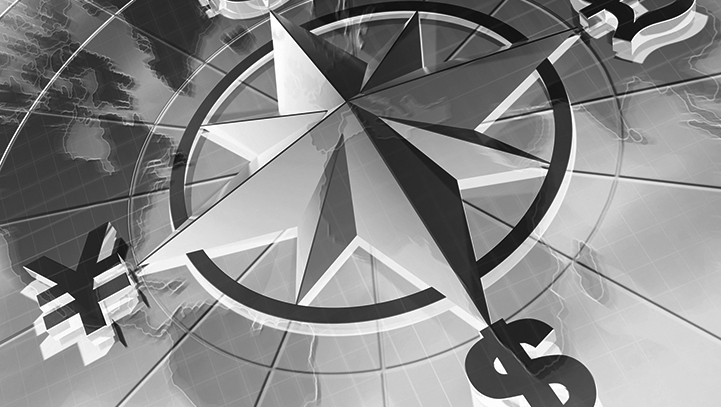International Trade 2050 – third wave of globalisation
New wave of globalisation driven by more economic integration and digital technologies
At short term notice a slow-down for the world economy in 2016/2017 is forecasted by the OECD (Organisation for Economic Cooperation and Development). The increasing number of geopolitical risks plays a major role, but so do climate change, the refugee crisis and growing nationalism. The World Bank warns of a decade of slow growth in the emerging markets with some risks of a “Sudden stop”, meaning a trust reversion of global capital streams away from these countries with major consequences for their currencies and economic stability.
Overall, the macroeconomic backdrop for 2016 looks likely to resemble that seen last year with reasonable growth in the G7, a further controlled slowdown in China and weakness in many other emerging markets.
In this climate of global economic uncertainty the Trade Winds report from Oxford Economics on behalf of HSBC Bank gives some insight on future trends.
The outlook for International trade, today - 2050
By 2050 the world should be, according to the report, in the cusp of a third wave of globalisation, seeing global merchandise trade quadruple and trade in services accelerate, mainly through increased economic integration and new technology.
The future global economy will be more integrated and thus larger than today. This is likely to create many opportunities for European businesses to access new customers with innovative, highly customised products and services.
The first wave of globalisation, 1865 – 1913, was about the march of industrialisation, plummeting costs of transport and logistics, being interrupted by Word War I, the second wave took place from 1950 – 2007, featuring an age of prosperity after World War II till 1973, the industrialisation of Asia, 1974 – 1990, hyper-globalisation from 1991 – 2001 and maturing global supply chains, 2001 – 2007. This second phase was interrupted by the financial crisis in 2008.
Small is beautiful
In the third wave of globalisation, 2015 – 2050, it will matter whether your business is agile, technology- and data-supported as well as sustainable. One consequence of data being king to track evolving client and customer demands is that small players interact internationally and compete globally. Reduced barriers to trade through the coming Digital Single Market in the EU will help as well. Cost of shipping is certain to fall by 2050, driven by a combination of larger vessels and the expansion of shipping lanes. New airports and streamlined border control processes will reduce air freight costs and speed up the exchange of traded goods.
Malta needs to work on its strengths and weaknesses
Malta as one of the EU’s smallest economies still has a number of advantages.
- a good communications technology infrastructure, which can be further enhanced;
- English as an official language;
- an advantageous tax regime backed up by more than 70 double taxation agreements;
- a strategic location in the Mediterranean and an enviable climate;
- a low-cost environment and a well-trained, motivated workforce.
The main problems Malta is facing are traffic, corruption and immigration, according to the results of a survey recently conducted by InsightPolls, whereas main personal concerns are as well traffic, followed by income and the environment.
Traffic thus maintained its positions as the most important problem faced by individuals in Malta. The Government is well advised to speed up the solution of traffic problems which are not only a daily headache for many in the country, but also a limiting factor to the development of a number of local industries, among others tourism and Malta’s positioning for the international conference business.
Tomorrow’s trading landscape
The centre of gravity of global trade is expected to continue its shift to the east as trade growth in Asia increases. The chart below pinpoints the development of the 10 top trading nations, showing 2 main facts:
- The top 3 nations remain the same, being China, United States and Germany
- Other European nations, such as France, the Netherlands, Italy and United Kingdom will be replaced by South Korea, India, Mexico and other emerging markets like Vietnam.
Click here to read the full report.
Although the economies of North America and Western Europe will struggle to expand merchandise exports by 2% a year between 2025 and 2050, the economic growth in these markets will still be significant—even if the Eurozone grows by just over 1% a year during 2020-50, it will still be 40% larger by 2050.


